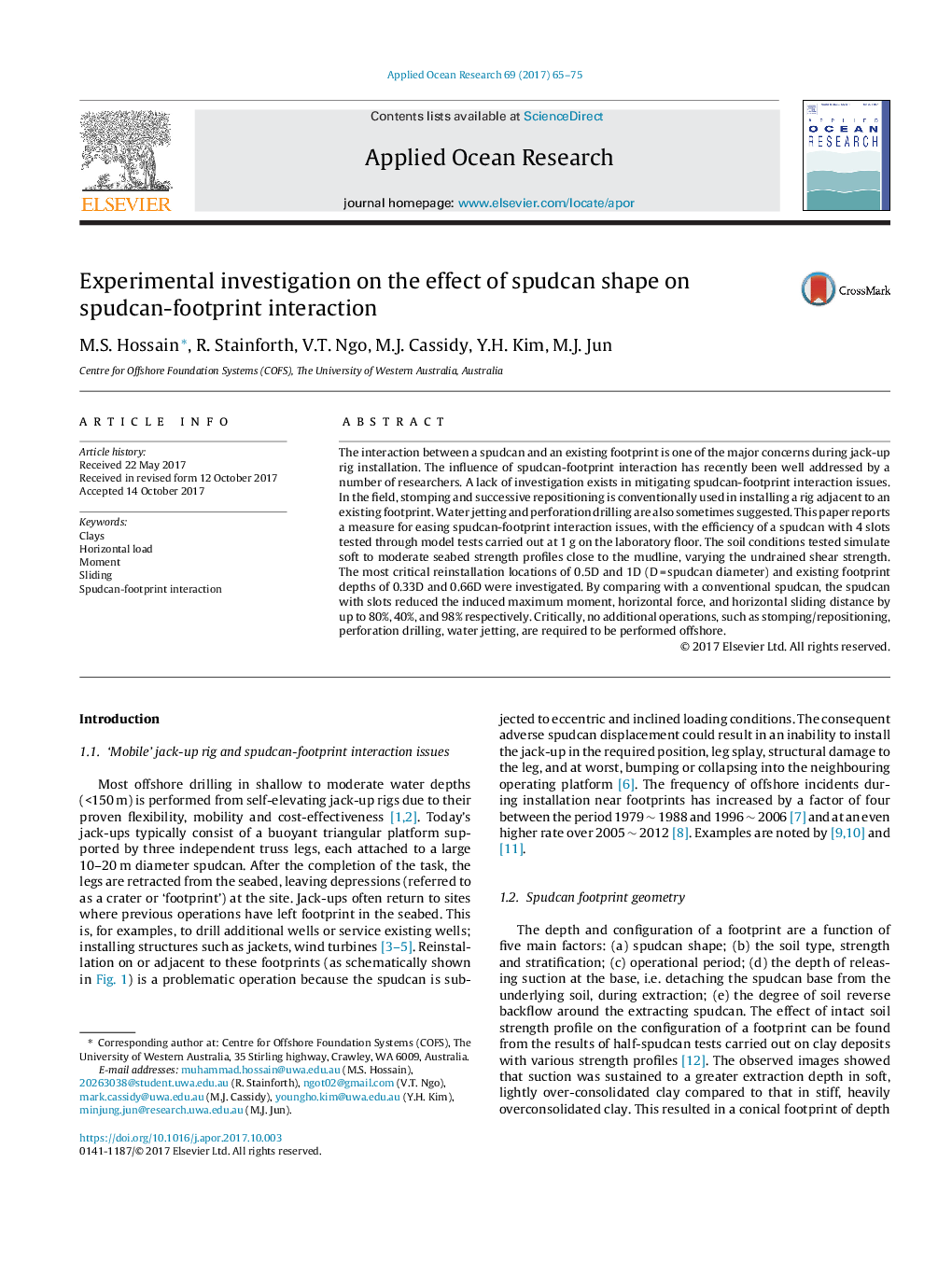| Article ID | Journal | Published Year | Pages | File Type |
|---|---|---|---|---|
| 8059348 | Applied Ocean Research | 2017 | 11 Pages |
Abstract
The interaction between a spudcan and an existing footprint is one of the major concerns during jack-up rig installation. The influence of spudcan-footprint interaction has recently been well addressed by a number of researchers. A lack of investigation exists in mitigating spudcan-footprint interaction issues. In the field, stomping and successive repositioning is conventionally used in installing a rig adjacent to an existing footprint. Water jetting and perforation drilling are also sometimes suggested. This paper reports a measure for easing spudcan-footprint interaction issues, with the efficiency of a spudcan with 4 slots tested through model tests carried out at 1Â g on the laboratory floor. The soil conditions tested simulate soft to moderate seabed strength profiles close to the mudline, varying the undrained shear strength. The most critical reinstallation locations of 0.5D and 1D (DÂ =Â spudcan diameter) and existing footprint depths of 0.33D and 0.66D were investigated. By comparing with a conventional spudcan, the spudcan with slots reduced the induced maximum moment, horizontal force, and horizontal sliding distance by up to 80%, 40%, and 98% respectively. Critically, no additional operations, such as stomping/repositioning, perforation drilling, water jetting, are required to be performed offshore.
Keywords
Related Topics
Physical Sciences and Engineering
Engineering
Ocean Engineering
Authors
M.S. Hossain, R. Stainforth, V.T. Ngo, M.J. Cassidy, Y.H. Kim, M.J. Jun,
